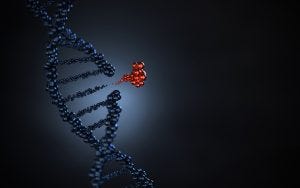
Horizon Discovery has launched an industry consortium aimed at improving the CHO expression platform using modern gene-editing tools such as CRISPR and rAAV.
At BPI Europe in Vienna, Austria earlier this month, cell line technologies firm Horizon Discovery announced plans to create an industry group to address inadequacies with the prevalent Chinese hamster ovary (CHO) expression platform by using the gene-editing tools CRISPR (clustered regularly interspaced short palindromic repeats) and rAAV (recombinant adeno-associated virus).
“The CHO cell line has hardly changed in the last 30 year since it was first used in the manufacture of biotherapeutics,” Dirk Gewert, business unit leader of bioproduction at Horizon Discovery, told Bioprocess Insider following the conference.

Image: iStock/Andy
“Until 2015 when Horizon began offering its own GS KO cell line, HD-BIOP3, only three other companies were offering commercially available, manufacturing ready CHO cell lines for the expression and large-scale production of biotherapeutics. In all cases cell lines were selected by identifying high expressing clones and focussing on process optimization to improve expression and other critical quality attributes.
“The key objective for the CHO consortium is to leverage modern gene-editing tools, namely CRISPR and rAAV, to improve the biology at the heart of the cell, ultimately to generate a fundamentally improved CHO expression platform available to the entire industry for the manufacturing of routine biotherapeutics such as MAbs together with a suite of engineered cell lines optimised for different attributes for more challenging molecules.”
Reducing risks and costs
Based on a cost and risk-sharing model, the consortium aims to combine relevant molecules and cell lines together with Horizon’s gene-editing and screening experience. Members will be key influencers in development of this industry-standard platform, we were told.
“They will obtain data specific to their individual molecule architecture and preferred cell line together with early access to data encompassing multiple cell lines and different product architectures that will be applicable across their broader pipeline,” said Gewert.
“Accessing our established CRISPR screening methodology and pre-optimized assays increases the likelihood of success and leads to significant time saving. Improved cell lines will be available to members at least one year ahead of general release to the industry.
According to Gewert, the approach ensures that the cost of generating knockouts of the most relevant genes will be shared by all consortium members and reduces risk and costs.
“Working in isolation, utilising a screening-based approach to improve a CHO host is a high risk, high cost endeavour. By accessing our established CRISPR screening methodology and pre-optimized assays, together with a collaborative approach to screening against different molecules, the risk and cost can be shared.
“We estimate that development of a single improved cell-line targeted to a single molecule in isolation using modern gene-editing and screening techniques as a service would take up to two years and has a significant risk that the improved line is specific to the therapeutic expressed and not applicable across different products.”
About the Author
You May Also Like

schedl_b_and_w.jpg?width=100&auto=webp&quality=80&disable=upscale)
schedl_b_and_w.jpg?width=400&auto=webp&quality=80&disable=upscale)






